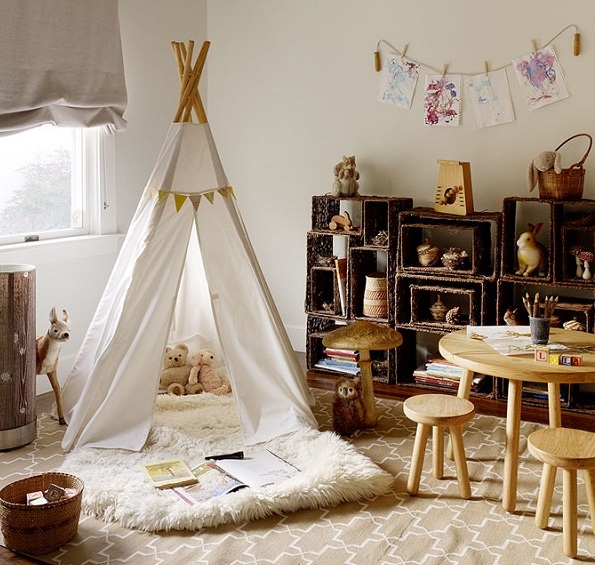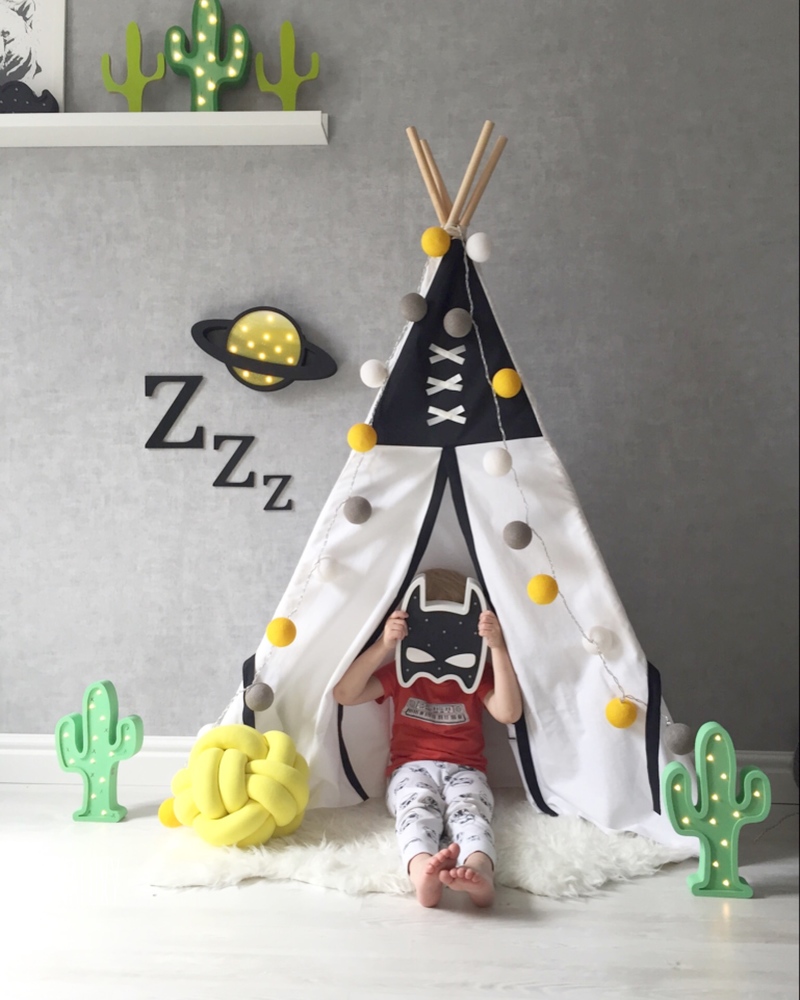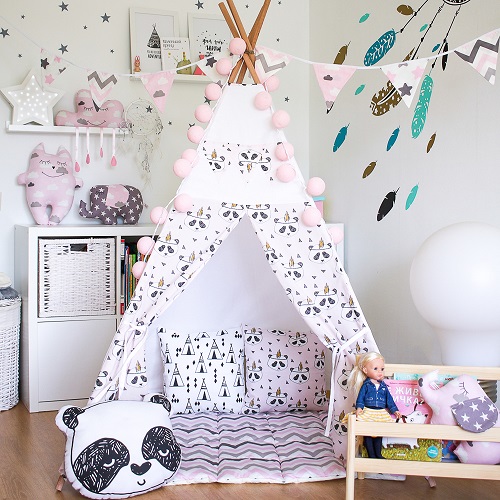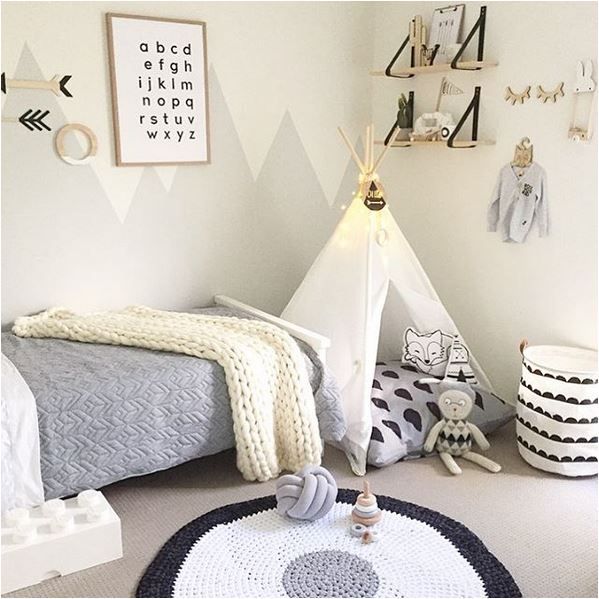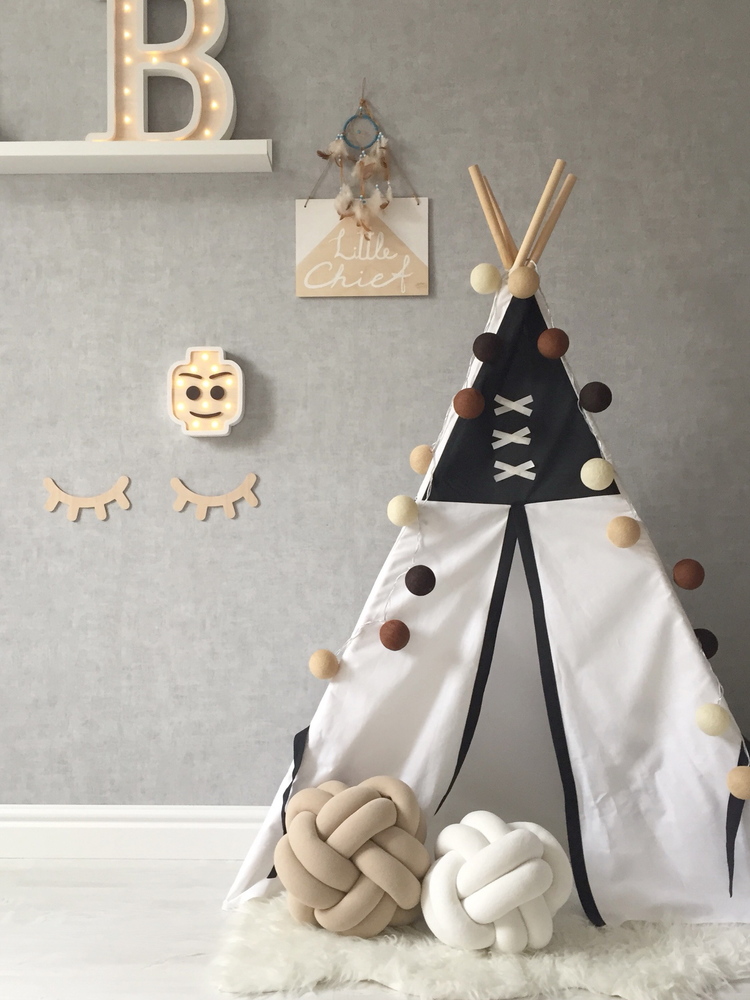In order for a child to develop, he needs tools for creative realization – in order for him to grow up as a multifaceted personality, he needs space for creativity. The Indian wigwam is perfect for this – the child will be able to fulfill his creative potential, and there will always be a place for solitude. In a wigwam, a child can play, read and even sleep. This is an interesting place for all kinds of pastime.
A children’s wigwam does not have to look like a real Indian dwelling. This is the image of a tent, endowed with a certain shape and style. The child should be comfortable crawling into it and playing inside, but you need to be sure that the structure will not fall over. Often they think about a wigwam when you need a design for a child’s room for a boy. But in a girl’s room, it will also be appropriate, it all depends on the materials used and the filling of the playing space.
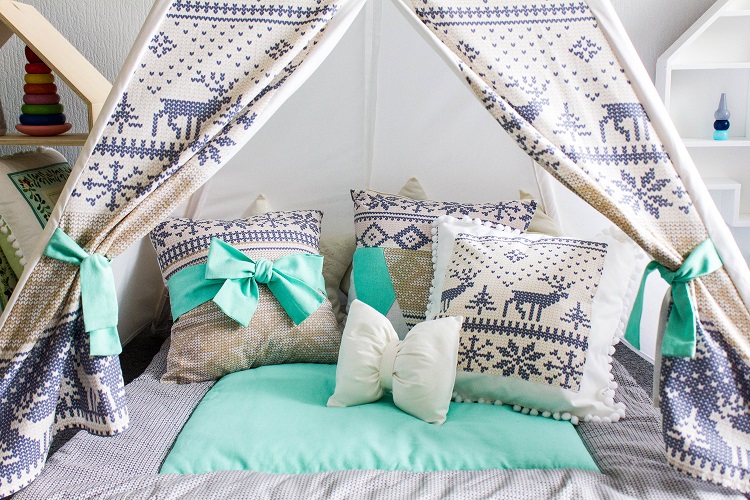
How to make a wigwam yourself
In order to make a wigwam with your own hands, the patterns must be drawn with a marker on a plastic oilcloth. You will need a long ruler or protractor. The pattern should be triangular, 120 centimeters wide, and 180 centimeters high. The drawn parts must be cut with scissors..
Finished pattern particles must be pinned to the fabric with needles, leaving a seam allowance of about one and a half centimeters on each side.
Cut out the base from the fabric in two copies, and one copy from a thin padding polyester.
At the base, you need to make a pocket to fix the sticks. To do this, cut out three square pieces separately, each side of which should be ten centimeters.
Cut out four fifteen centimeter strings, eight centimeters wide. You will also need a pattern of ribbons for edging..
Sew the base together with a thin padding polyester, sew on ribbons and pockets.
Cut the walls of the structure. At this stage, you can prepare the fabric to create an applique, the decoration must be sewn before joining the walls with the base.
On a piece of fabric that will serve as a front wall, you need to make an entrance. To do this, make two identical cuts at the bottom, and grind the edges with tape. Above above the incised area, the strings are sewn on the front and back sides. With their help, the fabric can be rolled up and fixed over the entrance.
Sew the walls of the structure, leaving a little space at the top so that the sticks look out.
Put on the stitched structure on the sticks, fix their lower part in the pockets, additionally tie it with ribbons and ties.
Using this scheme, you can sew a beautiful and comfortable wigwam that will fit into a nursery with any interior. If you are just thinking about creating a harmonious design, read the rules for choosing furniture for a nursery. With their help, you can create a unique fairy-tale world for your child..
What is needed to build a wigwam
several meters of suitable fabric, it is better if it is natural so that the child is not hot in the middle;
thin synthetic winterizer;
tapes for edging;
three two-meter wooden beams, two centimeters in diameter;
threads matching the color of the fabric;
crayon;
scissors;
centimeter;
polyethylene oilcloth;
oilcloth marker.
It is advisable to take the fabric in several colors: multi-colored and plain. Then it will be possible to make applications on the wigwam and it will be more fun for the child to play in it..
How to build a five-slat children’s wigwam
The children’s hut can stand on different support points. The number of sticks depends on the area that should be inside. Using five rails, you can make a beautiful and spacious wigwam with your own hands.
For him you will need
five long wooden slats;
a roll of twine;
from four to five meters of fabric in two colors: cotton and lace;
set of push pins.
This type of wigwam is less durable than the previous one, but to create it you do not need to mess with patterns and sewing.
The slats must be the same length. In order not to get confused, you should first consider the options for crossing the rails.
The first pair is tied with twine, fixing it tightly. Then the same thing must be repeated with the second pair of rails. The fifth rail should be inserted between them.
The finished structure is once again tied tightly with twine, connecting all the sticks together. It is important that all elements are fixed firmly.
A narrow but long piece should be cut off from the cotton fabric and the junction of the sticks should be tied with it. It is pulled between each rail, and the end is hidden inside the structure.
Paper clips will help secure the fabric. Their advantage over nails is that they do not harm the fabric, so the hut can be assembled and disassembled, while maintaining a good appearance of all its elements..
A piece of the same size as the previous one is cut from the lace material. It is tied just below the junction of the sticks in a similar way, also securing with paper clips.
Subsequent actions consist in alternately wrapping pieces of two types of fabric around the slats. The direction can be arbitrary. It is necessary to allocate a place for the entrance: there is no need to wrap the fabric between the first two sticks, that is, an unfinished circle must be made of the fabric.
All cuts should be wrapped around each rail, securing this place with paper clips.
The finished hut can be decorated with flags or paper garlands. In the middle of the wigwam, you can put a sheep’s skin or a blanket and pillows so that the kids can play comfortably.
What is important for building a wigwam for children
The decor of the wigwam depends on personal preference. If you make a hut like the American tribes, you will need feathers, pebbles, leather straps, ornaments on the fabric. Modern designs can be decorated with pom-poms, paper garlands and trendy prints.
The wigwam must have a cone shape.
The ends of the sticks should always look out from above, revealing the opening for fresh air.

